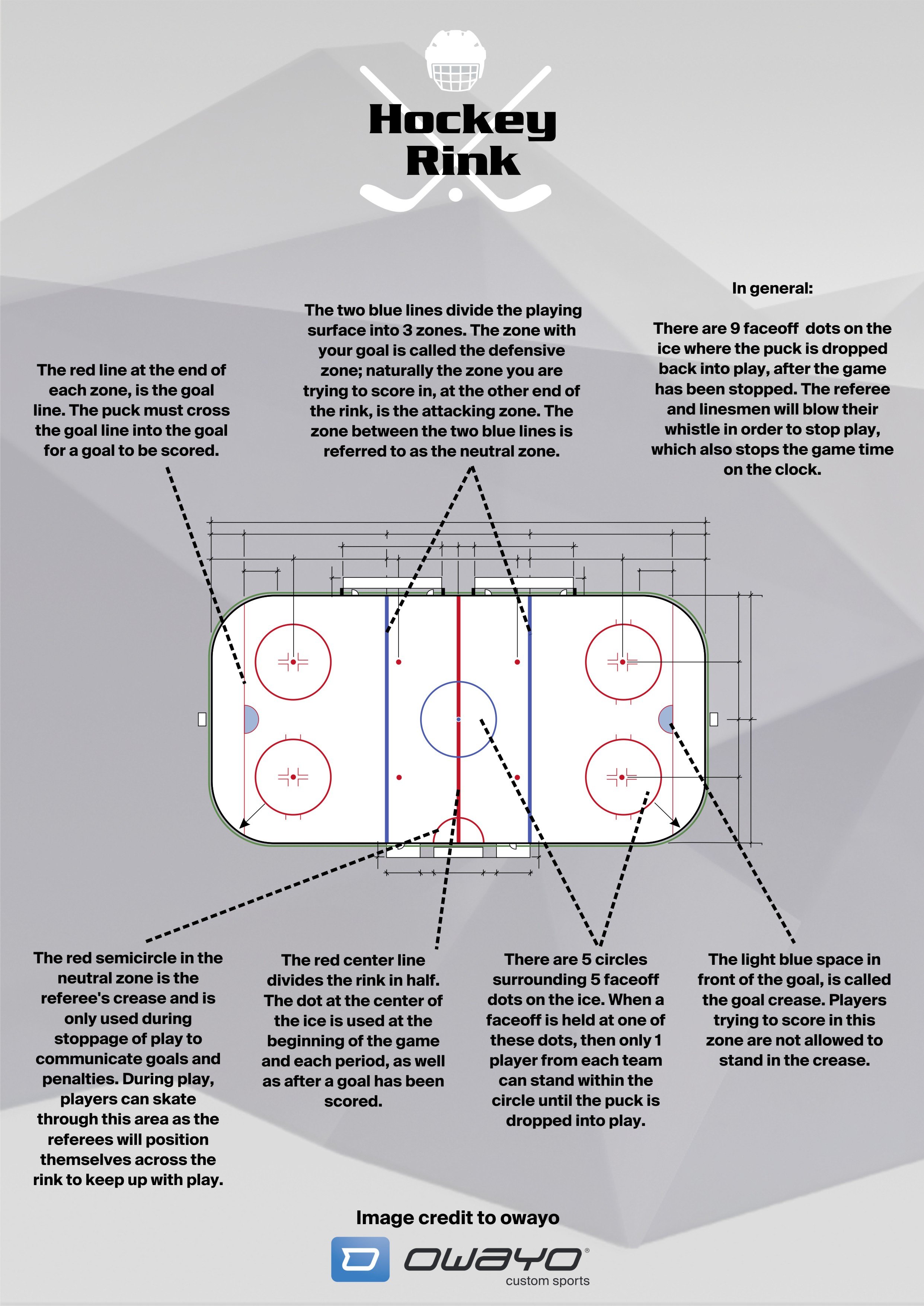Hockey players know when to change lines through a mix of signals and timing. Coaches, teammates, and game flow all play key roles.
In hockey, line changes are crucial for maintaining energy and performance. Players switch out during play to keep the team fresh and effective. Understanding when to change lines involves keen awareness and quick decision-making. Coaches often call for changes based on strategy and game conditions.
Players also rely on visual and verbal cues from teammates. This coordination ensures smooth transitions and sustained pressure. Knowing the right moment to switch can make or break a game. This blog will delve into the details of how hockey players master this critical aspect of the sport. Keep reading to discover the fascinating world of line changes in hockey.

Credit: hockeysarsenal.substack.com
Line Change Basics
Line changes in hockey are a strategic part of the game. Players rotate in and out of play to keep energy levels high. This ensures the team remains competitive throughout the match. Understanding the basics can help fans appreciate the game’s complexity.
Importance Of Line Changes
Line changes are crucial for maintaining player stamina. Hockey is a fast-paced sport. Players need frequent breaks to stay effective. A tired player is more likely to make mistakes. Fresh players can perform better and reduce the risk of injuries.
Coaches monitor player performance closely. They decide the best moments for line changes. Proper line changes can impact the game’s outcome significantly. Teams that manage line changes well often have an advantage.
Timing Strategies
Timing is everything in hockey line changes. Coaches and players use several strategies to determine the best moments for substitutions.
- Shift Length: Players usually stay on the ice for 45-60 seconds. Longer shifts can lead to fatigue.
- Puck Possession: Teams prefer changing lines when they have control of the puck. This reduces the risk of turnovers.
- Situation Awareness: Players look for safe moments to change. For example, during a break in play or when the puck is in the opponent’s zone.
Effective communication is key. Players signal each other when it’s time to switch. Coaches also shout instructions from the bench. Good timing can keep the team in a strong position throughout the game.

Credit: www.youtube.com
Communication On Ice
Effective communication on ice is critical for hockey players. It ensures smooth line changes, maintaining the team’s energy and strategy. This communication happens in various ways, involving both verbal and non-verbal cues. Let’s explore the different methods players use to communicate during a game.
Role Of Team Captains
Team captains play a crucial role in communication on ice. They lead by example and make quick decisions. Captains often signal line changes, ensuring players are always fresh and ready. They communicate with both the coach and players, relaying important messages. Their leadership helps maintain order and efficiency during the game.
Signals And Cues
Players use various signals and cues to communicate on ice. These can be visual, such as hand signals or eye contact, and verbal, like calling out names or numbers. A common cue is tapping the stick on the ice, indicating readiness for a change. Another signal is a quick nod or wave to catch a teammate’s attention. These cues must be clear and understood by all team members.
- Hand signals: Simple gestures to indicate movement or strategy.
- Eye contact: Direct communication without words.
- Stick tapping: A common way to signal readiness.
- Nods and waves: Quick movements to grab attention.
Effective signals and cues help avoid confusion and ensure seamless transitions. They allow players to focus on the game without missing a beat. Communication on ice is a team effort, requiring practice and understanding.
Physical And Mental Cues
Hockey is a fast-paced game. Players must be quick and alert. Knowing when to change lines is crucial. Both physical and mental cues help players decide the right time. These cues ensure they maintain peak performance on the ice.
Fatigue Indicators
Fatigue can slow a player down. Physical cues help players recognize fatigue. Feeling tired is the most obvious sign. Heavy breathing is another indicator. Muscles may feel sore or weak. These signs mean it’s time for a change.
Players also look at their teammates. If a teammate is tired, they might signal for a change. Watching the clock is important too. Most players stay on the ice for 45 seconds to 1 minute. Exceeding this time can lead to mistakes.
Maintaining Peak Performance
Mental cues are just as important. A player’s focus can wane as they get tired. Missing passes or losing the puck are signs. These mental lapses can cost the team. It’s better to change lines and keep fresh players on the ice.
Coaches also play a role. They observe the players closely. Coaches may call for a line change if they notice signs of fatigue. This helps keep the team performing at its best.
Both physical and mental cues work together. They help players know when to change lines. This keeps the game fast and exciting.
Coaching And Bench Management
Efficient coaching and bench management are crucial in hockey. Coaches must decide when players change lines. This ensures the team performs well throughout the game. Proper management keeps players fresh and ready.
Coach’s Role In Line Changes
The coach plays a pivotal role in line changes. They watch the game closely. They notice when players start to tire. The coach signals players to switch. This keeps the energy levels high. A good coach anticipates the game flow. They make quick decisions to maintain a strong pace.
Bench Organization Techniques
Proper bench organization is essential for smooth line changes. Players sit in specific order. This helps them get on the ice quickly. They know who they replace. The bench is divided into sections. Each section is for a different line. This reduces confusion.
Here are some bench organization techniques:
- Label seats with player names.
- Use colored markers for different lines.
- Maintain a clear pathway for quick exits and entries.
These techniques ensure players are always ready. They know their role and can respond quickly. Proper organization makes the game flow better. It reduces downtime and increases efficiency.
Impact On Game Strategy
Hockey is a fast-paced game. Players need to change lines quickly and efficiently. This impacts the overall game strategy significantly. Understanding when to change lines helps teams stay fresh and competitive throughout the match.
Adjusting To Opponents
Teams must adjust their lines based on the opponent’s strategy. A coach may switch players to counter a specific opponent’s strengths. For example, if the opposing team has a strong offensive line, the coach may send out the best defenders. This helps neutralize the threat and maintain control of the game.
Coaches also study the opponent’s line changes. They look for patterns to exploit. If an opponent changes lines at predictable times, the coach can plan to take advantage.
Maximizing Player Efficiency
Changing lines ensures players stay fresh and perform at their best. Hockey is physically demanding. Players need regular breaks to maintain high energy levels. Coaches plan line changes to keep players rested and effective.
A typical shift lasts 45 seconds to a minute. After this, players start to tire. By rotating players, the team keeps up the pace of the game. Fresh players mean faster skating and better decision-making.
| Shift Duration | Player Efficiency |
|---|---|
| 0-45 seconds | High |
| 45-60 seconds | Moderate |
| 60+ seconds | Low |
Coaches also use line changes to give star players more ice time. These players can make critical plays and change the game’s outcome. By managing line changes smartly, the team maximizes its chances of winning.

Credit: www.owayo.com
Frequently Asked Questions
How Do Hockey Players Know When To Change Lines?
Players change lines based on signals from coaches and teammates. They watch for cues like tiredness.
What Signals Do Hockey Coaches Use For Line Changes?
Coaches use verbal calls and hand signals. They also tap players on the shoulder.
How Often Do Hockey Players Change Lines?
Players typically change lines every 30-60 seconds. It depends on game intensity and player fatigue.
Why Are Line Changes Important In Hockey?
Line changes keep players fresh. Fresh players perform better, making the team stronger overall.
Do Hockey Players Plan Line Changes?
Yes, players practice planned line changes. Coaches set strategies and assign line combinations.
Can Players Change Lines Anytime?
Players change lines during play stoppages or when the puck is far from their goal.
What Is A “shift” In Hockey?
A shift is the time a player spends on the ice between line changes. Usually, 30-60 seconds.
How Do Players Communicate During Line Changes?
Players use short, loud calls or gestures. Good communication ensures smooth transitions.
Do All Hockey Teams Use The Same Line Change Strategy?
No, strategies vary by team and coach. Some teams focus on quick changes, others on longer shifts.
Conclusion
Hockey players change lines with precision and teamwork. They rely on coaches’ signals. Players watch their teammates and the game flow. Quick and smooth transitions keep the team strong. Knowing when to change lines is crucial. It helps maintain energy and performance.
Communication and practice make it seamless. Now, you understand how hockey players excel in this skill. The strategy behind line changes is fascinating. It’s a key part of the game’s success.




